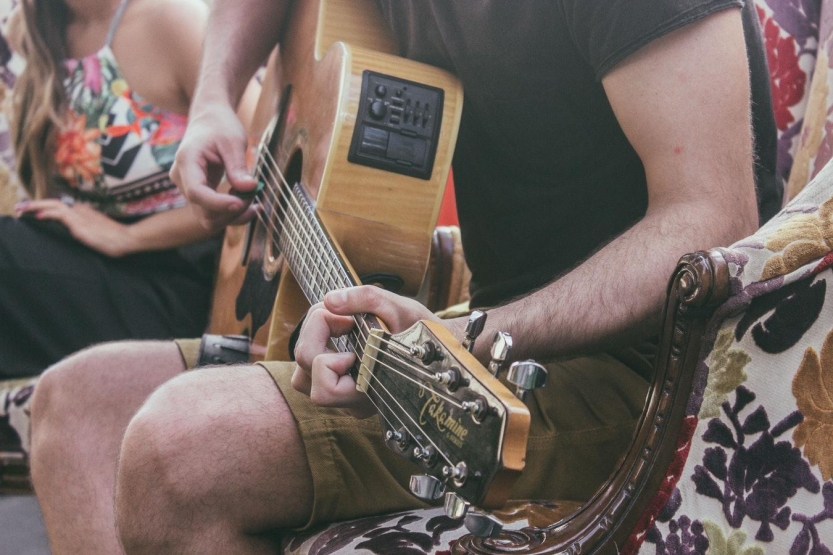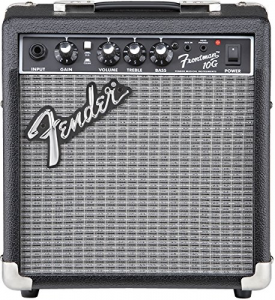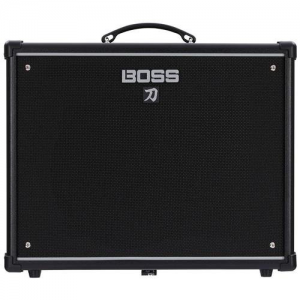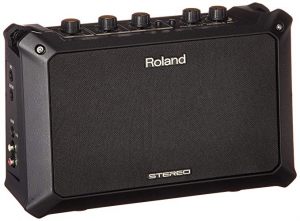
Drummers are loud people — let’s talk about it. I have to deal with a drummer who never calls in sick for rehearsals. He always shows up, and always insists on banging on those drums so I can’t hear myself think.
The Roadie 2 makes it possible to get my acoustic guitar in tune despite the environment being noisy. But what happens then? My beautifully tuned guitar will still be drowned out by the incessant hammering on Mylar.
This is where it’s practical to have an acoustic guitar amp.
What does an acoustic guitar amp do?
Overcoming loud drummers is not the sole reason for an acoustic guitar amplifier, of course. There are a lot of cool features that will take your live performances up a notch or ten.
Channels for your guitar AND your microphone
In addition to a jack input for your acoustic guitar, many amps will also have an XLR input for a microphone. You’ve probably seen a street busker or two employ an amp for this very reason.
Effects galore
Guitarists love effects, and many amps come with just that. Basic features include compression and the ability to loop riffs. Other amps will have reverb, delay, chorus and flange effects.
Control that feedback, please
Although feedback can sound awesome at times, it is mostly reserved for the more rock’n’roll clientele. Playing folk or country with an acoustic guitar seldom calls for feedback. Acoustic guitar amps are good for solving that problem.
How much power do you need?
How much power you need depends on how much noise you have to cut through. The smallest amps push around 20-30 watts, which won’t get you very far. You’ll need around 50-60 watts to be heard in small venues, and at least 100 watts if you want to play with a full band.
Mono or stereo?
Whether you need one or the other kind of amp depends on what kind of effect you plan on using. Stereo delays will require a stereo amp, but a mono amp is just fine if you simply want to boost your natural sound.
Tube or solid-state?
Tube amps are great if you’re going for a warm and natural tone amplification. The only issues with them is that the tubes have to be replaced after some use. Solid-state amps might be a better bet, as they tend to be very reliable and produces a clean sound.
That’s all! Click on the images to find out more about the acoustic guitar amps you’ve seen in this article. Just remember that unless you’re in tune, all you’re amplifying is screaming felines — always bring your Roadie 2.




